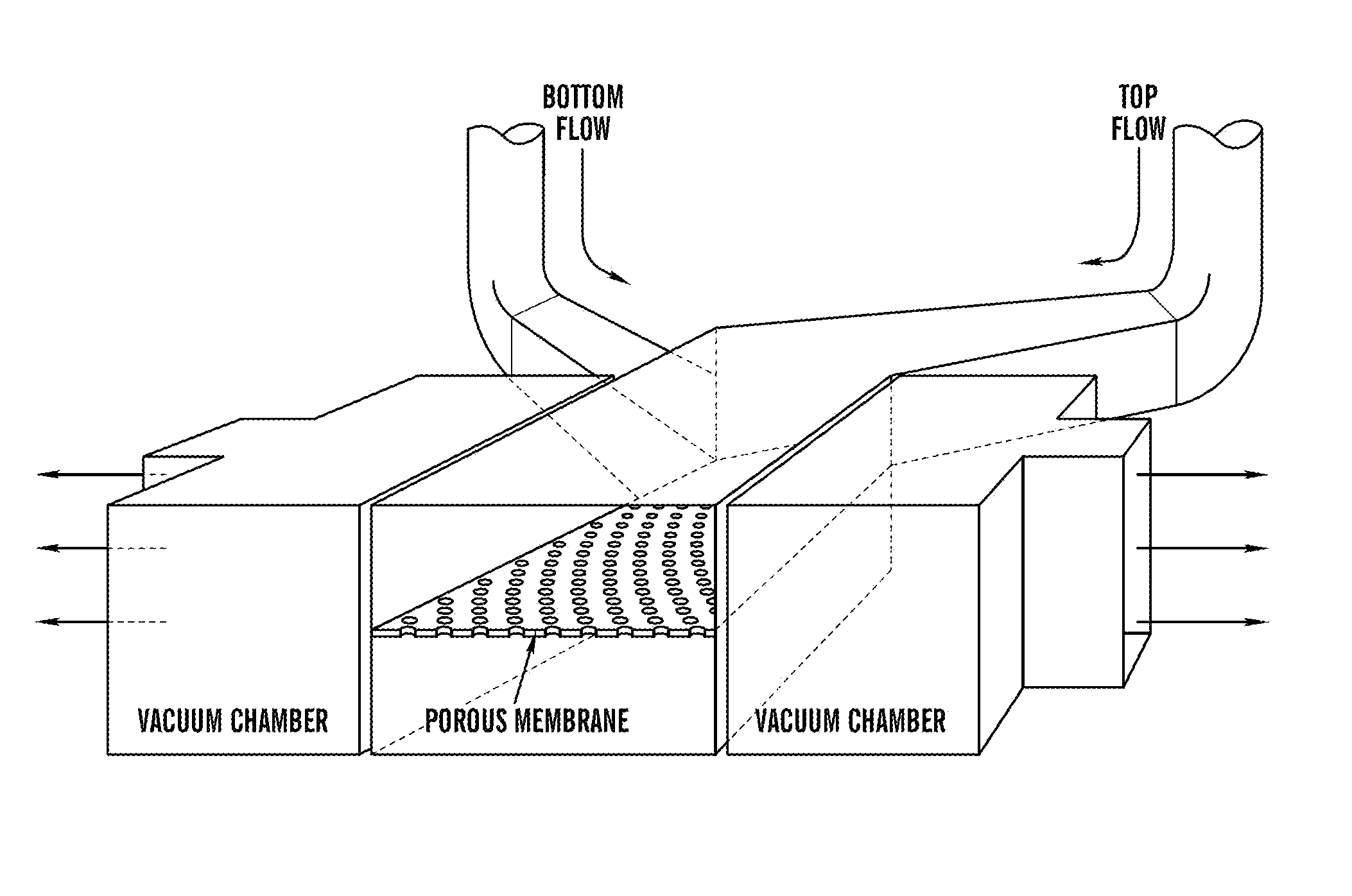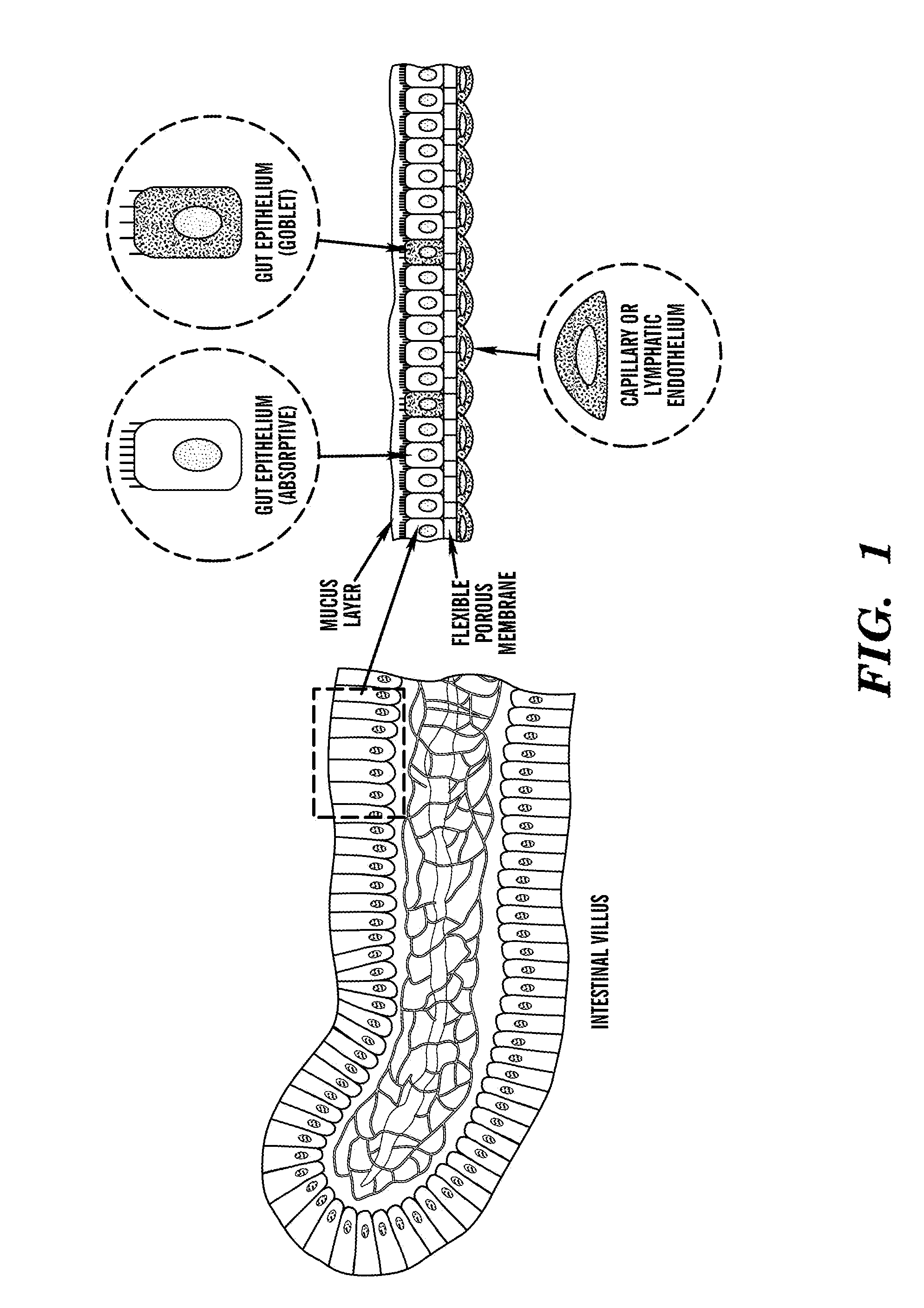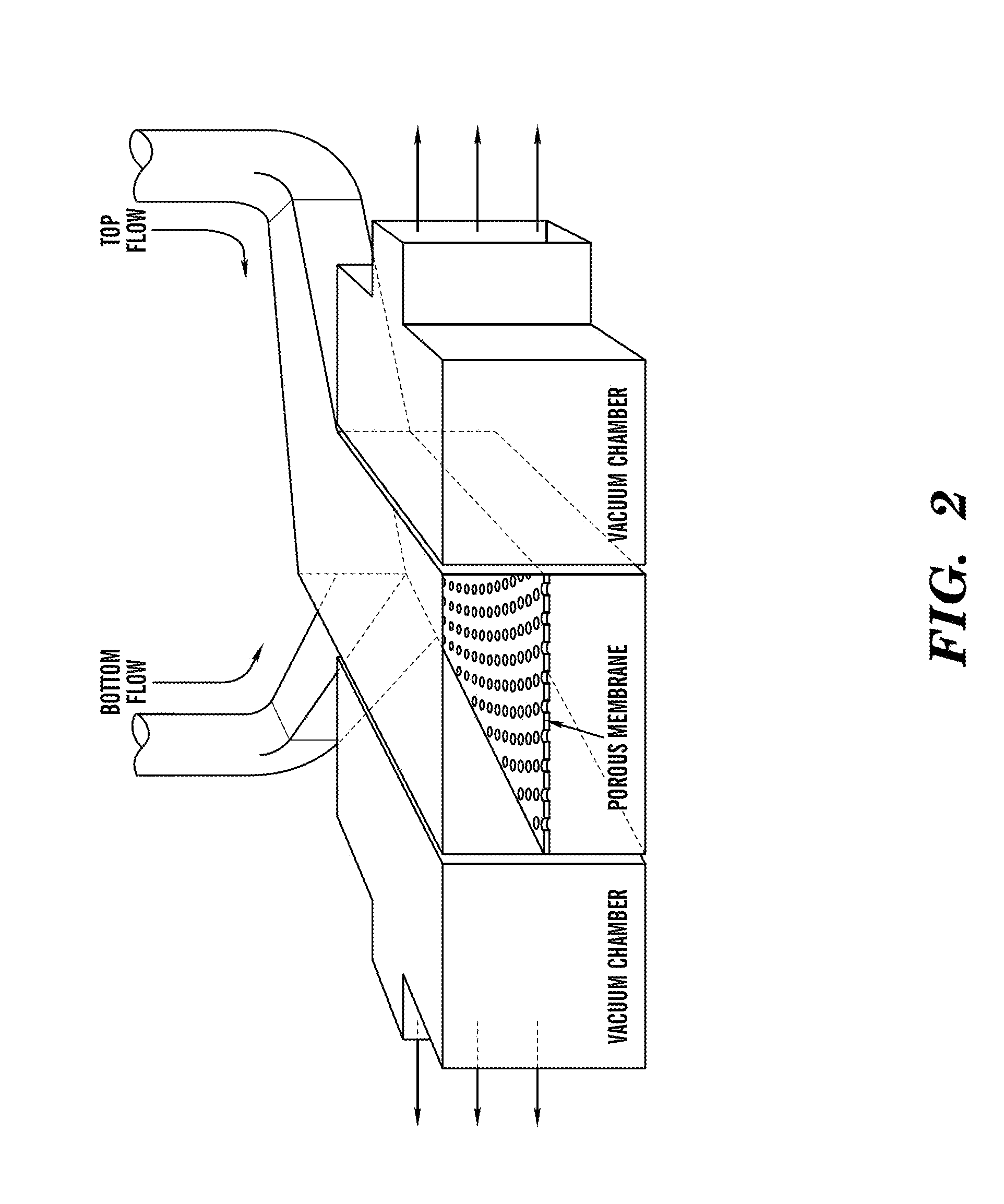Cell culture system
a cell culture and system technology, applied in the field of cell culture system, can solve the problems of difficult to maintain intestinal organoids, difficult to control the growth rate of intestinal organoids,
- Summary
- Abstract
- Description
- Claims
- Application Information
AI Technical Summary
Benefits of technology
Problems solved by technology
Method used
Image
Examples
example 1
[0198]The ‘gut-on-a-chip’ can be a microfluidic system containing monolayers of cultured human intestinal epithelial cells and human endothelial cells from capillary blood vessels and / or lymphatic lacteal separated by a porous flexible extracellular matrix (ECM) coated membrane that can experience rhythmic mechanical distortion similar to intestinal motility (e.g. peristalsis and segmental), which is designed to recapitulate the tissue-tissue interfaces and microstructure of the human intestine (FIG. 1). The goal of ‘gut-on-a-chip’ project is to provide a robust, reproducible, and predictive in vitro platform for human responses to orally delivered compounds, therapeutics, nutriceuticals, functional foods, pathogens, and toxins. The gut-on-a-chip should be useful for a wide range of applications in fields of pharmacology, toxicology, drug development, drug delivery, drug metabolism, drug-drug interactions, drug bioavailability, drug clearance, multi-organ interactions (e.g. intestin...
example 2
[0219]Development of an in vitro living cell-based model of the intestine that mimics the mechanical, structural, absorptive, transport and pathophysiological properties of the human gut along with its crucial microbial symbionts could accelerate pharmaceutical development, and potentially replace animal testing. Described herein is one embodiment of a biomimetic ‘Human Gut-on-a-Chip’ microdevice composed of two microfluidic channels separated by a porous flexible membrane coated with extracellular matrix (ECM) and lined by human intestinal epithelial (Caco-2) cells that mimics the complex structure and physiology of living intestine. The gut microenvironment is recreated by flowing fluid at a low rate (30 μL / hr) producing low shear stress (0.02 dyne / cm2) over the microchannels, and by exerting cyclic strain (10%; 0.15 Hz) that mimics physiological peristaltic motions. Under these conditions, a columnar epithelium develops that polarizes rapidly, spontaneously grows into folds that ...
PUM
| Property | Measurement | Unit |
|---|---|---|
| shear stress | aaaaa | aaaaa |
| shear stress | aaaaa | aaaaa |
| shear stress | aaaaa | aaaaa |
Abstract
Description
Claims
Application Information
 Login to View More
Login to View More - R&D
- Intellectual Property
- Life Sciences
- Materials
- Tech Scout
- Unparalleled Data Quality
- Higher Quality Content
- 60% Fewer Hallucinations
Browse by: Latest US Patents, China's latest patents, Technical Efficacy Thesaurus, Application Domain, Technology Topic, Popular Technical Reports.
© 2025 PatSnap. All rights reserved.Legal|Privacy policy|Modern Slavery Act Transparency Statement|Sitemap|About US| Contact US: help@patsnap.com



